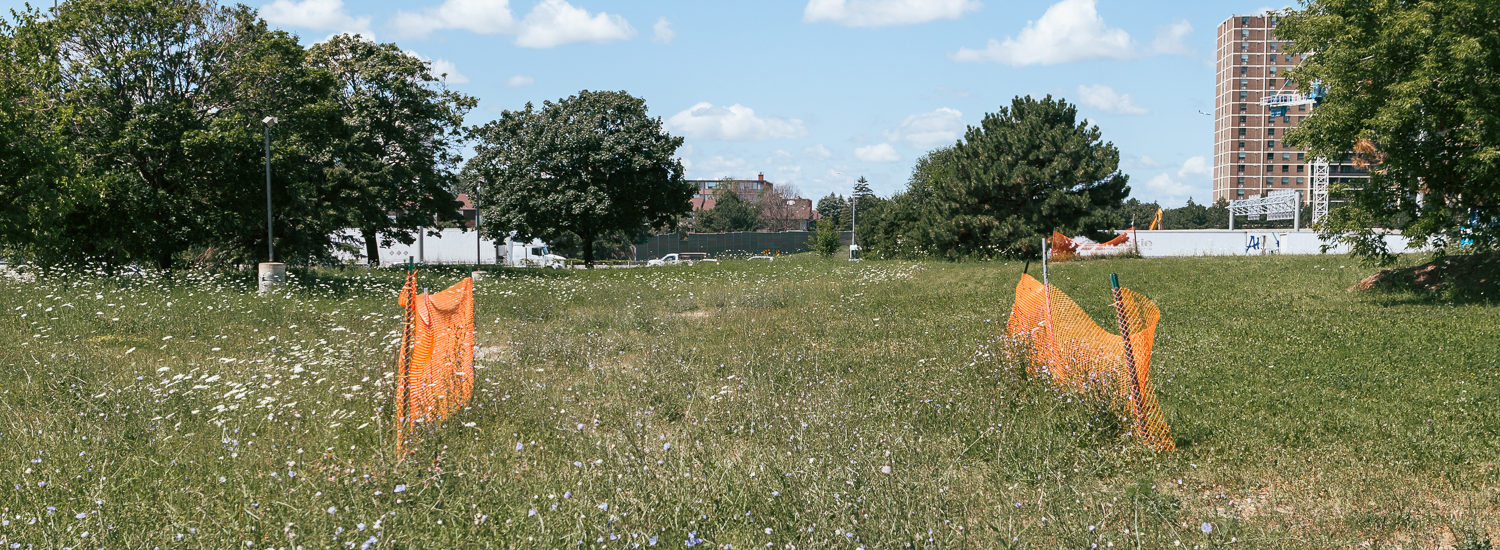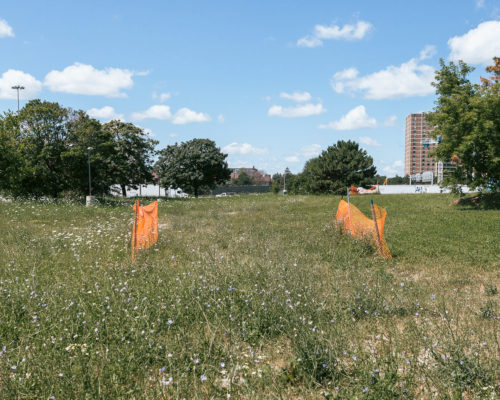After Utopia examines the relationship between people and seemingly mundane suburban spaces; where daily life, memory and personal histories push against ever-crumbling modernist designs. Focused on a section of Eatonville, a West Toronto neighbourhood in Etobicoke, the work visualizes the evolution of a neighbourhood beyond an original Modernist utopian vision. The work expresses local experiences and histories through photographs and semi-fictional anecdotes of local inhabitants. Holes cut into fences become scissors against strict property lines. Dirt footpaths over green lawns are red pens correcting the illogic of sidewalk plans. Scorched earth behind towers are inkblots on the pristine imagery of suburban parks, whose vision remains trapped on paper.
Between the tension of utopia and life, between plan and reality, tower neighbourhoods and suburbs have become symbolic of urban lifelessness and neglect, of failure and the inhospitable. The photographs and accompanying anecdotes composing After Utopia confront the tension that exists in our discourse on suburban spaces and the transformation and growth of Toronto. While people are notably absent from the photographs, the stories remind us that these anonymous locations are, despite us, significant as they become entwined in personal histories through everyday encounters.
After Utopia reveals how unglorified suburban spaces are storied and subtle, despite their depiction as lifeless. As such, After Utopia offers an alternative framework on how to understand the suburbs of Toronto. The narratives presented in After Utopia explore the ways in which we turn public spaces – despite their flaws – into personal, storied encounters; and suggests how the recognition of these stories are integral to our understanding of place.
Curated by:
Curated by:
Sheraz Khan, Alexandra Hong, and William Pemulis


